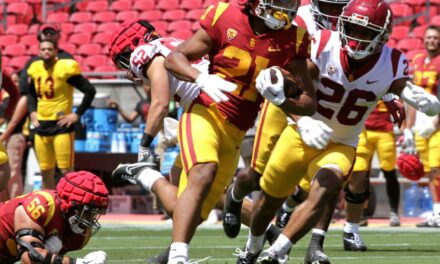Family of International Soccer Icon Pelé Bids Farewell to Dying Star
The family of Pelé, the international star who was instrumental in three World Cup championships with Brazil across three decades and who energized U.S. soccer with the New York Cosmos in the 1970s, has spent the past several days saying goodbye.
By Stacy M. Brown | NNPA Newswire Senior National Correspondent
The family of Pelé, the international star who was instrumental in three World Cup championships with Brazil across three decades and who energized U.S. soccer with the New York Cosmos in the 1970s, has spent the past several days saying goodbye.
The 82-year-old legend has been hospitalized since November, and his doctors reported that Pelé’s cancer had advanced, requiring care related to renal and cardiac dysfunction.
He has been receiving regular treatment since doctors removed a tumor from his colon in 2021.
“Father. My strength is yours,” the international star’s son, Edinho, posted on social media.
In a video posted online by his family, Pelé appears in and out of conscious as loved ones cuddle with and embrace him on a hospital bed.
In a separate video titled, “Pelé says goodbye to family and friends from the hospital bed,” Pelé recorded a barely audible message.
Boxing legend Mike Tyson and hip-hop icon Snoop Dogg were among the many international personalities to record tributes to Pelé.
Born Edson Arantes do Nascimento in Três Corações, Brazil, on Oct. 23, 1940, Pelé became soccer’s first superstar.
He led the Brazilian national teams to World Cup glory in 1958, 1962, and 1970.
In 1956, he joined the Santos Football Club, with Pelé, at inside left forward, winning nine São Paulo league championships and, in 1962 and 1963, the Libertadores Cup and the Intercontinental Club Cup.
Sometimes called “Pérola Negra” (“Black Pearl”), Pelé became a Brazilian national hero. According to Britannica, he combined kicking power and accuracy with a remarkable ability to anticipate other players’ moves.
“After the 1958 World Cup, Pelé was declared a national treasure by the Brazilian government to ward off large offers from European clubs and ensure that he would remain in Brazil,” Britannica researchers wrote.
On Nov. 19, 1969, in his 909th first-class match, he scored his 1,000th goal.
Pelé made his international debut in 1957 at age 16 and played his first game in the World Cup finals in Sweden the following year.
The Brazilian manager was initially hesitant to play his young star. But, according to Britannica, when Pelé finally reached the field, he had an immediate impact, rattling the post with one shot and collecting an assist.
He had a hat trick in the semifinal against France and two goals in the championship game, where Brazil defeated Sweden 5–2. At the 1962 World Cup finals, Pelé tore a thigh muscle in the second match and had to sit out the remainder of the tournament.
Nonetheless, Brazil went on to claim its second World Cup title.
Researchers said rough play and injuries turned the 1966 World Cup into a disaster for Brazil and Pelé, as the team went out in the first round, and he contemplated retiring from World Cup play.
Returning in 1970 for one more World Cup tournament, he teamed with young stars Jairzinho and Rivelino to claim Brazil’s third title and permanent ownership of the Jules Rimet Trophy. Pelé finished his World Cup career, scoring 12 goals in 14 games.
Pelé’s electrifying play and penchant for spectacular goals made him a worldwide star.
His team Santos toured internationally to take full advantage of his popularity. For example, in 1967, he and his team traveled to Nigeria, where a 48-hour cease-fire in that nation’s civil war was called to allow all to watch the great player.
Pelé announced his retirement in 1974 but, in 1975, agreed to a three-year $7 million contract with the New York Cosmos of the North American Soccer League and to promote the game in the United States.
He retired after leading the Cosmos to the league championship in 1977.
Pelé was the recipient of the International Peace Award in 1978. In 1980 he was named Athlete of the Century by the French sports publication L’Equipe, and he received the same honor in 1999 from the International Olympic Committee. In 2014 the Pelé Museum opened in Santos, Brazil.
“We thank you all for all the love and light you send,” Pelé’s daughter, Kely Nascimento, wrote on Instagram. The post accompanied a photo of the family inside the icon’s hospital room.

Stacy M. Brown
A Little About Me: I'm the co-author of Blind Faith: The Miraculous Journey of Lula Hardaway and her son, Stevie Wonder (Simon & Schuster) and Michael Jackson: The Man Behind The Mask, An Insider's Account of the King of Pop (Select Books Publishing, Inc.) My work can often be found in the Washington Informer, Baltimore Times, Philadelphia Tribune, Pocono Record, the New York Post, and Black Press USA.














